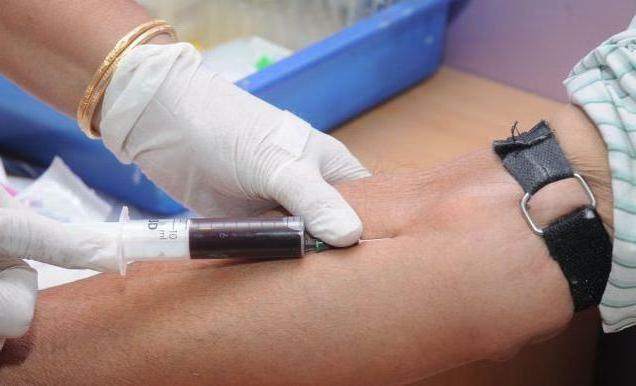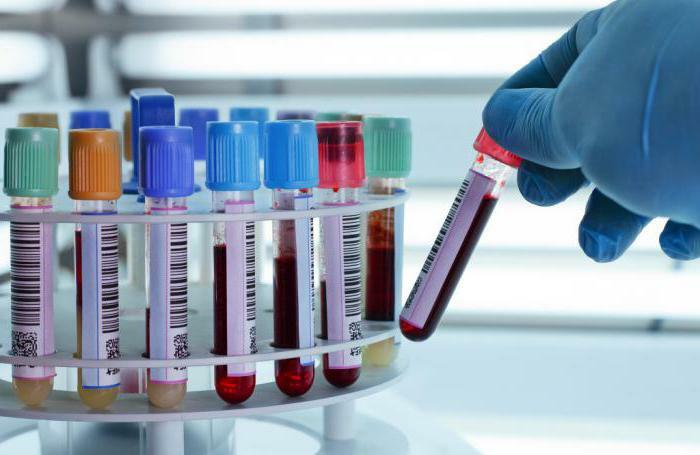Cationic eosinophilic protein( ECP): what shows norm, analysis
Assay for the cationic eosinophilic protein is prescribed when the patient is suffering from allergies or bronchial asthma. This study shows how much the disease is active at the moment. This method of diagnosis is not often used and is not carried out in all laboratories.
What is ECP?
The blood contains white blood cells - leukocytes, which are divided into several types. One of the varieties is eosinophilic granulocytes( or eosinophils).If you look at these cells in a microscope, you can see the granules inside their cytoplasm. Eosinophilic cationic protein( ECP) is part of these granules. It is a protein with a positive charge.

In case of allergic reactions, ECP enters the bloodstream. The same phenomenon occurs when helminths are invaded, since this protein has a toxic effect on the parasite cells. And with allergies, ECP is intensively produced by eosinophils. This protein increases the production of mucus in the airways, affects blood coagulability and the formation of immune cells. With an allergy from the cytoplasm, an eosinophilic cationic protein is released. What does this reaction mean? This is the body's response to the interaction of the allergen and immunoglobulins.
Why do you pass the analysis on ECP?
Allergists and pulmonologists sometimes prescribe an analysis for the eosinophilic cationic protein. What does this study show? The level of blood in the ECP indicates the severity of eosinophilic inflammation in allergies and helminth diseases. With bronchial asthma, you can see the regularity: the stronger the symptoms of the disease, the higher the level of cationic eosinophilic protein. The higher the ECP, the harder the pathology. It can be said that this protein is a marker of allergy aggravation.

This analysis is also necessary in cases when the patient undergoes treatment for an allergic or helminth disease. Decreased ECP indicates the effectiveness of therapy.
When are the examinations scheduled?
Blood test for cationic eosinophilic protein is prescribed if the patient has the following symptoms:
- breathing difficulty or asthma attacks in contact with animal hair, pollen of plants, dust;
- rashes on the skin, accompanied by itching;
- runny nose or sneezing in contact with allergens;
- rashes on the skin, swelling of the nasopharynx, sneezing and dyspepsia after eating certain types of food.
However, only one blood test for ECP is not enough to make an accurate diagnosis. Usually, additional tests are required.

Decoding of the results of
In what quantities should the eosinophilic cationic protein be contained in the serum? The norm is from 0 to 24 ng / l. Usually the content of ECP corresponds to the indicator of the number of eosinophils.
With some pathologies this figure can be much higher. So, with bronchial asthma, the ECP index can exceed the norm by 2-3 times.
Sometimes the analysis reveals very high rates( about 240 ng / l) of the eosinophilic cationic protein. What does such a serious deviation from the norm mean? This indicates either infection with helminths( usually schistosomes), or exacerbation of atopic dermatitis.
In some cases, ECP values exceed the norm several dozen times( about 700 ng / l).Usually such figures occur with hypereosinophilic syndrome. This is a fairly serious disease associated with a violation of hematopoiesis.
Sometimes it can be seen how after the treatment, the eosinophilic cationic protein begins to decrease gradually. What does this result show? This indicates the effectiveness of the prescribed therapy. Using the ECP study, the necessary dosage of drugs for patients with bronchial asthma is calculated.

What diseases does the analysis reveal?
If the result of the analysis is not more than 24 ng / l, then this is considered a variant of the norm. Only the excess of this figure is considered a deviation. This is the case with the following diseases:
- acute infections of the upper respiratory tract( rhinitis);
- polyps in the sinuses of the nose;
- is an allergic form of bronchial asthma;
- bronchial asthma due to intolerance to aspirin;
- food allergies;
- atopic dermatitis;
- allergic rhinitis with seasonal exacerbation;
- hypereosinophilic syndrome;
- helminthic invasion;
- allergic inflammation of the esophagus, stomach, intestines;
- of eosinophilic pneumonia of autoimmune origin( Charge-Strauss syndrome);
- is an allergic conjunctivitis;
- The intake of certain drugs( antibiotics, non-steroidal anti-inflammatory drugs, "Carbamazepine", "Phenobarbital", "Co-trimoxazole", "Phenytoin", "Glimepiride."
Reduced protein level does not play a big role in diagnosis
Increase in cationic protein in childrenup to 1 year is not always associated with allergies. It may be caused by Rh-conflict, pemphigus skin, infectious and fungal diseases.
How to prepare for the examination?
A few days before the scheduled analysis,, which may affect the results of the study, such as:
- antibiotics,
- tranquilizers,
- interferon medications,
- laxatives containing plantain,
- central nervous system stimulants
And also several days before the analysis, it is not recommended to eat fatty foods, eatalcohol Before the study you can not smoke, perform heavy physical work, drink sweet tea, coffee, juices.
Analysis is taken in the morning on an empty stomach. Stop eating after 8-12 hours before the test. You can drink only pure water.
How is the analysis done?
To conduct a study on the cationic eosinophilic protein, blood is taken from the vein. Then the tube with the material is sent to the laboratory. The blood is centrifuged to separate the red blood cells. Serum is studied by immunochemilumenic method.

This method of investigation is based on the reaction of the antibody with the antigen. The protein contains arginine - an amino acid, which is determined with the help of monoclonal antibodies.
This is an informative method of research, which in 90% of cases gives reliable results. In diagnostic laboratories, the analysis is done fairly quickly, usually the results are known after 1-2 days.
What should I do with increased ECP?
The patient is always concerned when he learns that he has increased eosinophilic cationic protein. What to do in this case? Everything depends on the reason that caused such a deviation.
If the patient has previously experienced signs of allergic reactions, contact with substances that cause an exacerbation of the disease should be avoided. The doctor will prescribe a course of treatment with antihistamines. If the allergen is unknown, then a skin test will be required to determine the type of irritant.
If the patient has never had any signs of a disease before, a slightly elevated ECP may indicate a tendency to allergies. In this case, usually pass an additional analysis for immunoglobulin and the leukocyte formula.

It should be remembered that the increase in cationic protein may be associated not only with allergy, but also with helminthic invasion or with blood diseases. You may need to take an analysis for the eggs of worms and protozoa, a consultation with a hematologist.
If the increase in ECP is associated with taking medications, then usually this phenomenon is temporary. After the end of the course of treatment, all the blood counts come back to normal.
It is very difficult to understand independently the reasons for the increase in cationic protein. First of all, it is necessary to show the result of the analysis to the attending physician. Therapy of such conditions are dealt with: allergist, pulmonologist and dermatologist.
